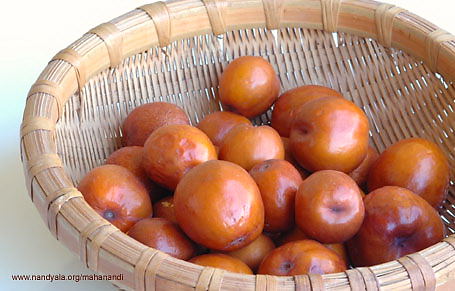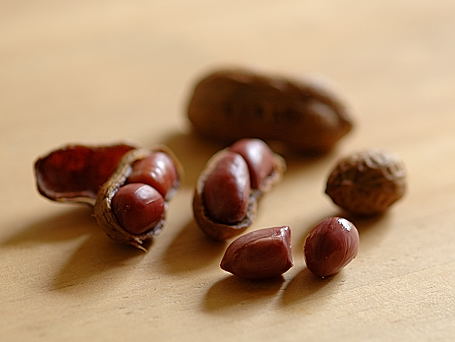
Boiled Peanuts Snack on a Rainy Spring Day

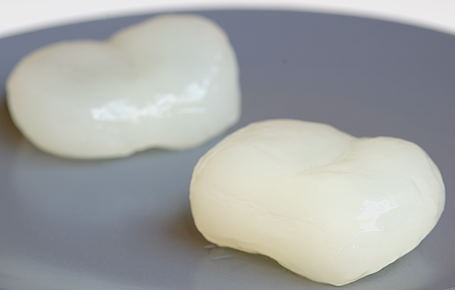
Popular summer fruit of India (Andhra), the toddy palm seeds (Taati munjalu) are a delicate halwa/jelly like fresh fruits prized for their sweet, tender flesh and refreshing sugary water inside. They appear in the market in early summer and the season is usually short.
Taati munjalu (toddy palm seeds) are treasured similar way like tender coconuts for us. They are divine fruits!
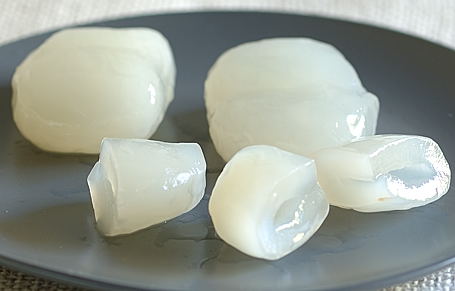
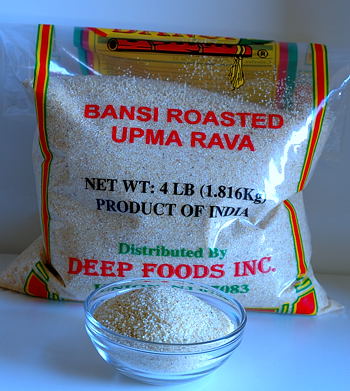
Different from broken wheat, suji and semolina, – in method of preparation, in size and taste, roasted upma rava is a special wheat product from India specifically used to prepare a flavorful Upma breakfast.
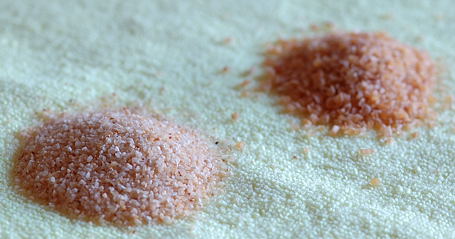
Samba Upma Rava at Daily Musings
Special note:
Is this your photo? – Find more details at Yahoo-Parade.
Veena Parrikar is a dear friend of Mahanandi and me and an occasional guest author on Mahanandi. Her first article was on Iceland. This is her second article, an insightful and engaging cookbook review. I thank Veena for this wonderful contribution!
~ Indira
There are perhaps as many misconceptions about Indian cuisine as there are restaurants named “Bombay Garden”.
Indian food is tandoori chicken, aloo-matar, saag-paneer, and naan.
It is hot and spicy.
Vegetables are cooked to death.
It starts with frying onions and tomatoes to pulp and ends with a garnish of coriander leaves
One can hardly blame the Western and even some of the Eastern world for harboring these notions. Most Indian restaurants outside India serve the same tired old fare under various guises. The exceptions to these are the upscale “fusion-Indian” restaurants; after all, Indian food cannot be admitted into the Michelin club without a French or “contemporary” accent (pun intended). Over the past few years, South Indian restaurants have slowly gained ground and it is not uncommon to see a Chinese eating masala dosa with her bare hands or a middle-aged white guy slurping rasam at the neighborhood Madras Cafe or Udupi Palace in the USA. The silly notions about Indian food, however, are far from being a thing of the past. For example, the threat of homogenization, albeit of a different kind, hangs heavy like the odor of yesterday’s takeout. The complexity and variation among and within the cuisines of the four states of Southern India (Karnataka, Kerala, Tamilnadu, and Andhra Pradesh) could never be guessed if one were to go by the menus of these South Indian restaurants. Most of them do not stray far from the familiar idli, vada, masala dosa, uttappam, sambar and rasam, with an indifferent nod to some rice varieties, such as curd rice, lemon rice and tamarind rice. Desserts are still “balls in sugar syrup” (gulab jamun), “ricotta cheese in evaporated milk” (rasmalai), or the occasional rava kesari, leaving in the cold a rich repertoire of jaggery-based sweets that is one of the hallmarks of the cuisines of Southern (and some other states of) India.
To be sure, even within India, availability of the authentic, traditional fare is limited to small niche restaurants, special festivals at star hotels, or if you are lucky, at the homes of neighbors and friends from other communities. Your best bet then, is to recreate many of these dishes in your kitchen, with the help of such cookbooks as Meenakshi Ammal’s Cook and See, Chandra Padmanabhan’s Dakshin, Saranya Hegde’s Mangalorean Cuisine, Saraswat Mahila Samaj’s Rasachandrika, and Jigyasa-Pratibha’s Cooking at Home with Pedatha.
A new addition to this stellar lineup of traditional Indian cookbooks is Ammini Ramachandran’s Grains, Greens, and Grated Coconuts: Recipes and Remembrances of a Vegetarian Legacy.
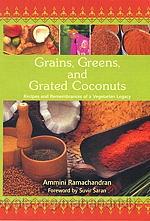
Ammini’s book fills a lacuna in the Indian cookbook landscape. Books on the cuisine of Kerala abound; however, most of them have a predominance of seafood dishes. Small wonder then that Kerala food, like most other coastal cuisines, is perceived to be primarily non-vegetarian. One food writer and journalist in India even declared that most Malayali vegetarian dishes are terrible! One knows, of course, not to take such statements without the proverbial pinch of salt, and a large one at that. Having encountered the delectable and varied vegetarian fare of the coastal cuisines of Goa and Karnataka, I had always suspected a similar treasure existed in Kerala. Eating and learning it, was another matter altogether, what with the lack of Kerala-food restaurants, close friends from the state, or opportunities to set forth on a voyage of discovery to its shores. With Grains, Greens, and Grated Coconuts, some of the vegetarian food of Kerala is now just a coconut (or two) away.
The present state of Kerala was formed by the merger of Kochi (Cochin), Tiruvithamcore (Travancore), and Malabar. Each of these regions, originally Hindu, was subject to varying degrees of Muslim and Christian influences. Accordingly, Kerala cuisine represents the confluence of Hindu, Muslim, and Christian traditions. Grains, Greens, and Grated Coconuts presents the traditional vegetarian cuisine of central Kerala including some from the Kochi royalty. It is one of the first cookbooks to focus on a Hindu culinary tradition of Kerala.
Grains, Greens, and Grated Coconuts is one of the finest Indian cookbooks to have been written in recent times. Here’s why:
1. Traditional food, when presented for a worldwide (read Western) audience, undergoes a simplification, motivated largely by the authors’ and publishers’ goal to widen the book’s market reach. Recipes are modified to exclude exotic or not-easily-available ingredients; difficult processes might be eliminated or substituted with commercial alternatives; and dishes that do not conform to the health fad of the day might be passed over. Except for a few dishes, food from Kerala is obscure even to many Indians, leave alone the non-Indian readers. Ammini has barely made any changes to her family recipes, yet her presentation makes them seem extremely do-able. She does not hesitate to include preparations with such exotic vegetables as breadfruit, jackfruit, and suran. Ammini has pulled off a seemingly impossible feat in Grains, Greens, and Grated Coconuts: she has preserved the originality of her traditional family recipes, and made them accessible to those outside the tradition, without overwhelming the reader with tedious detail. Novice cooks might miss having pictures of the finished dishes; the clarity of instructions, however, make up for this to a very large extent.
2. There is none of the anything-goes attitude to ingredients adopted by many modern Indian cookbooks published in the West. No false assurances are provided about difficult ingredients such as coconut milk. She tells us that coconut milk powder can be used instead, but clearly informs that the taste will not be authentic. We are told right at the onset: “My mother always insisted, “Never skimp on the quality or quantity of ingredients,” and I believe it is the first lesson in good cooking.” This is reflected in the meticulous detail provided in the chapter on ingredients.
3. Ammini’s family recipes create dishes that would go a long way in dispelling some of the popular myths about Indian cuisine. Spices are used in skillful moderation (garam masala powder never makes an apperance in this book), the vegetables and grains hold their shape and retain their flavour, and you will encounter delicate and subtly-flavoured curries that will never be found in a restaurant.
4. There is a detailed chapter on the history and development of ancient spice trade in Kerala, and to those who have not previously enquired into such matters, this chapter offers many surprises. The book also provides a very engaging account of the kitchens, culinary customs, and festivals and celebrations of Ammini’s maiden family. A world that is now almost extinct rises vividly from the pages and for a brief while, you forget the harried and hurried pace of your existence (and the pre-made frozen food in your kitchen). This is a serious yet enjoyable work, not just another cloying food “memoir” that is in fashion these days.
The book has been written for a Western audience, but readers in India will find much of profit. Such ancient traditional recipes do not come by very often. I am no alarmist, but it seems as though our traditional cuisines will soon exist only within the homes of determined souls or in five-star hotels. Even wedding feasts in India – the last stronghold of traditional food – seem to have embraced a global integration philosophy: Mushroom Pasta and Gobi Manchurian now jostle for buffet space with tava vegetables, Spanish rice, and Shahi Paneer.
Our culinary traditions, not unlike our ancient classical music, have been poorly documented for far too long, what with the practitioners jealously guarding their treasures from outsiders for various reasons. With the passing of generations, more and more of this body of knowledge will be lost. We hope there will be many more Amminis, who will not only document their family or community recipes painstakingly and truthfully, but also share it generously with others.

I was intrigued by this recipe as it did not include sambar powder, and at first glance, seemed similar to some of my daal-vegetable preparations. The finished dish was neither like the familiar sambar nor my usual daal-with-vegetables. With powdered spices (except asafetida and turmeric) as well as ginger-garlic absent, the flavour of toor dal is allowed to hold centerstage, complemented by the freshness of the potatoes, herbs, and lemon juice. I stayed faithful to the recipe as I am wont to do when attempting traditional recipes for the first time. There is a slight error of omission in the recipe, but a missing pinch of turmeric is not a show-stopper.
Recipe:
1 cup toor dal
1 medium russet potato or 3 taro, peeled and cubed
2 medium tomatoes cubed
Salt to taste
½ teaspoon turmeric powder
¾ cup finely chopped cilantro leaves
¼ cup finely chopped fresh fenugreek leaves (preferred, if available)
or ½ teaspoon ground fenugreek
6 fresh green chilies (serrano or Thai), thinly sliced (less for a milder taste)
4 tablespoons lemon juice
For seasoning and garnish:
2 tablespoons vegetable oil
1 teaspoon mustard seeds
1 dried red cayenne, serrano, or Thai chili, halved
¼ teaspoon asafetida powder
20 to 25 fresh curry leaves
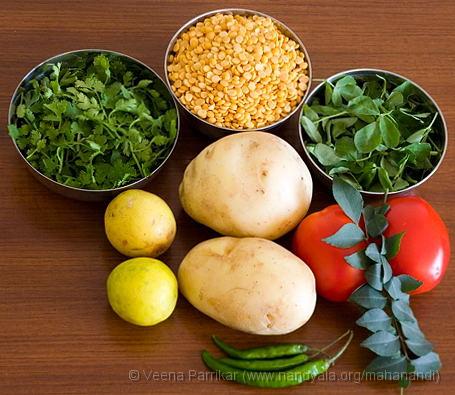
Wash and clean the toor dal in several changes of water, until the water runs clear. If you are using oily toor dal, the oil must be washed off before starting to cook. Place the toor dal in a saucepan with two and a half cups of water and a half-teaspoon of turmeric powder. Bring it to a boil over medium heat, then turn down the heat, and cook for twenty-five to thirty minutes. (As an alternative, you may use a pressure cooker to cook the dal, following the manufacturer’s directions. It will take about six to eight minutes to cook in a pressure cooker.) As the dal cooks, it should be fairly thick but still liquid; stir in another half-cup of water if it is too thick. Mash the cooked toor dal thoroughly with a spoon, and set it aside.
Combine the potato (or taro), tomatoes, salt, turmeric, and two cups of water in a saucepan over medium heat, and bring it to a boil. Stir in the cilantro, fenugreek, and green chilies. Reduce the heat, and cook until the potatoes are fork tender. Stir in the cooked toor dal, and simmer for four to five minutes. Stir in the lemon juice. Remove it from the heat, and set it aside.
Heat two tablespoons of oil in a small skillet, and add the mustard seeds. When the mustard seeds start sputtering, add the halved red chili, asafetida, and curry leaves. Remove it from the stove, and pour the seasoning over the cooked curry. Cover and set aside for ten minutes, to
allow the flavors to blend. Serve hot with rice and a second curry.
Makes 4 to 6 servings if served with another curry, as is traditional.
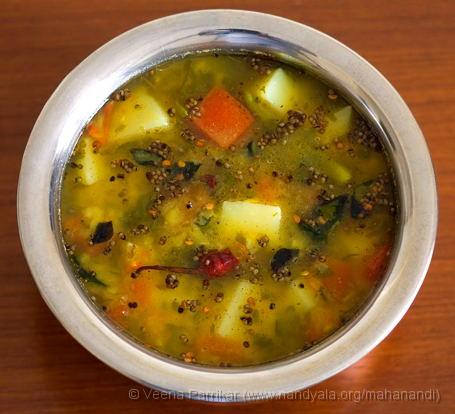
~Guest Post by Veena Parrikar
Notes:
Ammini Ramachandran’s website : Peppertrail.com.
For a detailed list of contents and exceprts from the book, see www.peppertrail.com.
Grains, Greens and Grated Coconut is available at Amazon.com, iUniverse.com and Barnes&Nobles
Recommend this cookbook to your local libraries
Author and Book Cover Photo Credits: Ammini Ramachandran, Recipe Photo Credits: Rajan Parrikar
Veena Parrikar’s previous article at Mahanandi: Iceland
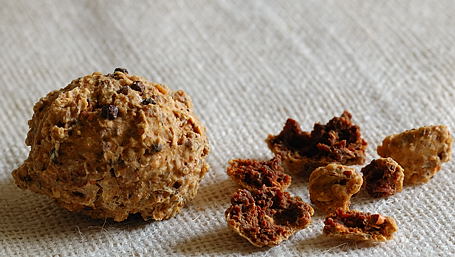
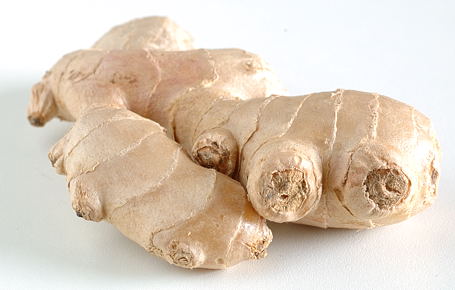
Root vegetables, as if happy to be unearthed, usually mingle well with other vegetables by being subtly sweet. But when it comes to Gingerroot-the rhizome, it’s quite another story.
Like an unruly tiny tot, ginger is full of attitude. Potent, pungent and incomparable, it is nothing like other rhizomes or root vegetables. To put it gingerly, ginger is never needed in pounds, just a small quantity is enough to liven up an otherwise ordinary culinary experience. And Indian cuisine, one of the mother cuisines in the world, pairs ginger with garlic and coriander. The pungency of ginger is controlled and counteracted with more pungent flavors. What a way to civilize the taste of ginger! A perfect pairing appreciated by mature palates.
Ginger, garlic and coriander, together ground into a smooth paste is something that I often use in my daily cooking. Almost all traditional tomato and coconut based curries (pulusu, subjis) need at least a teaspoon of ginger-garlic-coriander paste. So depending on the market price of these three ingredients or my time constraints, I prepare this paste in quantities large (which would last for at least two weeks) or small (just enough for that day’s meal).
Here is my recipe for ginger-garlic-coriander paste, and an entry to “Jihva for Ginger” event. Hosted from Scotland by lovely Rosie of “What’s the recipe today, Jim?”.
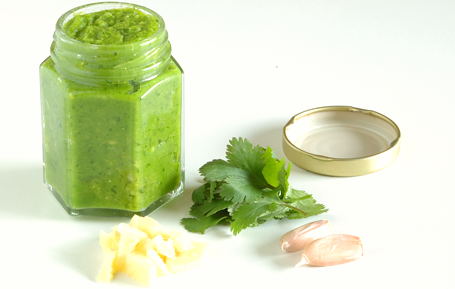
Recipe:
Ginger root – peeled, sliced to small pieces – Half cup
Garlic – peeled and sliced to small pieces – Quarter cup
Fresh coriander (cilantro) -finely chopped – 1 cup
Salt – quarter teaspoon
Take them all in a blender/food processor or in a mortar. Grind them to smooth consistency without adding water. Remove to a clean glass jar, seal tightly and store in the refrigerator. (Remains fresh from one week up to a month.) Whenever needed, take the required amount with a clean spoon.
To Jihva participants:
Rosie is in the process of moving and requesting “Jihva-Ginger” entries as early as possible.
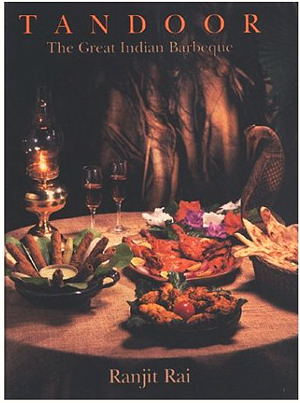
Seattle’s public library system has the biggest collection of cookbooks I have ever seen, and it covers a gamut of traditional and contemporary cuisines. Whenever all-day rain is in the forecast, I pack up a bag and hike to the library to spend the day. The library is spacious, vibrant, well-lit, and equipped with WiFi system. We can either browse through the bookshelves or sit in a corner and surf away on laptops. Stepping inside the library is my way of shutting out the gloom and grayness of winter, so I go.
One such day last week, I was in the cookbooks aisle, my usual hangout place at the library. Flipping the pages of various cookbooks, trying to decide which deserved the 10-minute trek back home. I usually place cookbooks into two categories. Books that are worthy of the paper they are printed on and books that would make even the docile trees of the rainforests cry. After all the sacrifice made of these gentle giants in the name of nourishing the human mind, the trash printed in the name of food and sustenance would make any decent person weep with disgust. We have to pulp the green to mint the green, I know that, but some cookbooks are truly a violation of everything that the rainforests stand for.
But I digress. So here I was in the pursuit of cookbooks worthy of my energy. The Seattle public library did not disappoint me. I found one that made me stop looking further. The book was titled “Tandoor – The Great Indian Barbeque”. It is not often that one finds a cookbook dedicated to a cooking technique as ancient as the 5000 years old tradition of tandoori. I had to pick it up. What a wonderful use of my time it was to read that book! “Tandoor” is written by Ranjit Rai of New Delhi. He had diligently detailed a manuscript on tandoor cooking, but had passed away before it could be published. His daughter and his best friend together edited and completed the publication of the book.
I can truly say that this cookbook is like the Bhagavad Gita for connoisseurs and lovers of fine cooking. Everything one would ever want to know about tandoor, the kartha, karma, kriya are described in detail. The first part of the book is dedicated to the history and different types of tandoor. Useful tips and tricks – how to construct a tandoor in your backyard, and how to adapt tandoor-style cooking to an apartment kitchen – are recited in eye-opening detail with captivating pictures. The second part of the book is about the karma, the basic work and preparation needed for tandoor cooking. Different types of tenderizers, marinades and masala powders that add special touch to tandoori dishes – what, how and why – are narrated with scientific explanations. Part three includes tandoor recipes for poultry, lamb, fish, vegetables, and breads. The book has a total of 105 recipes and each recipe is accompanied by one or two photographs of either the preparation stages or the finished product. Classic crowd-pleasers such as tandoori chicken, cocktail kababs, masala chops, tandoori jhinga, and paneer tikka along with kababs and tandoori rotis – you will find them all in this book. In spite of coming from a family with non-vegetarian food traditions, I have consciously avoided meat all these years. But even I cannot resist a masala tikka if it is cooked and served in the manner described in this book. That tempting!
Whether you are a culinary enthusiast or simply browse cookbooks as a pastime, if you ever come across this book in a bookshop or at your local library, please stop and pick it up. Mr. Ranjit Rai’s meticulousness and passion will leave you awestruck, as it did me. What a wonderful tribute to the timeless tradition of tandoor cooking! Well done! My vinamra namaskar to the father and daughter team.
“Fired from below 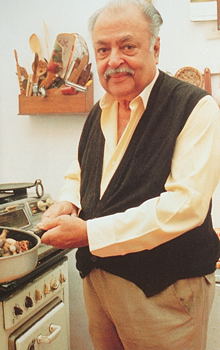
And cascading hear from above
Made from mother earth
By gently hands of women in love
Charging the clay with strength
Thou wondrous oven
Fail-safe cooker of goodness and health
From Unknown time
Through millenniums you serve
Now underground now from above
‘Big’, aromatic, baking and roasting
Accepting grain, meat and dove
The chicken brought you fame
And now on every lip is your name
You sit burning for others
Calling bring your meal ‘bread and dough’
And stir around me ‘timber’
Warm yourself a moment
The day’s work is done
Pay homage to the world’s greatest preserver.“
Like the author’s family, we too grew up with the tradition of indulging in green chickpeas (hare chane) during season. Like fresh peas of spring, green chickpeas taste wonderfully sweet with the delicate, earthy scent of the motherland. Fresh foods like these belong to a special category and the associated memories always make them irresistibly spectacular to me.
Seekhs/kababs prepared from fresh chickpeas, without a doubt are a great tandoori snack item. So here is a recipe from the “Tandoor” cookbook, adapted to my apartment’s electric-powered oven.
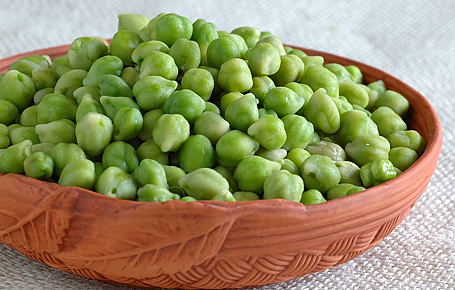
Ingredients and Method:
(for 7 or 8 medium sized kababs)
2 cups green chickpeas (hare chane, cholia)
1 small red onion or 2 shallots – finely chopped
1 teaspoon – cumin and quarter teaspoon – salt
1 tablespoon – peanut oil/ghee
2 tablespoons – gram flour/besan (acts as binding agent)
Half cup hung-yogurt (hang yogurt in a thin cotton cloth overnight to drain water)
6 green chillies, 4 curry leaves, 2 garlic, 1-inch ginger, 1 tablespoon grated coconut and pinch of salt – grind them together to smooth consistency in a spice grinder or in a mortar with pestle
—
Skewers – 3
side dish – a cup of yogurt and grilled baby onions
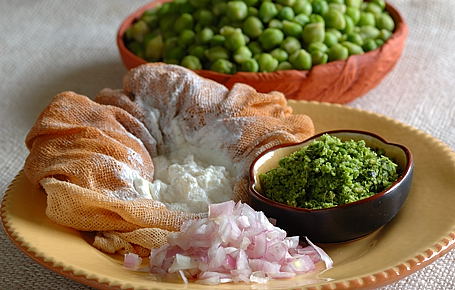
In a wide skillet, heat oil/ghee. Add and toast cumin first . Then add and saute onions plus green chilli-ginger paste. When onions are pale red, add green chickpeas. Mix. Cover and cook on medium-low heat for about 5 minutes, until the chickpeas soften a bit. (Like fresh green peas, green chickpeas cook fast.)
Add hung-yogurt and salt to taste. Mix and cook on low heat, until water evaporates from yogurt. With the back of the wide, slotted spoon, mash the whole thing to coarsely smooth consistency. Sprinkle besan flour and mix. Let cool.
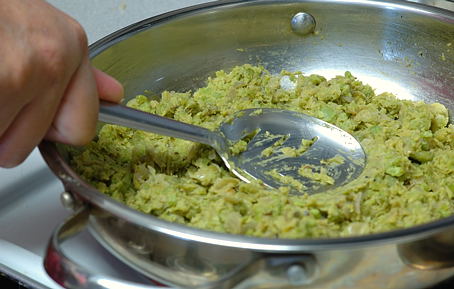
Oil and wipe the skewers. Shape the mashed chickpeas into chilli shape directly onto the skewers. Apply gentle pressure while shaping the kababs. Place skewer on a baking pan.

Once ready, place the pan in oven and broil, each side for about 4 to 5 minutes. Using a fork and fingers, carefully turn each kabab to opposite side for uniform cooking and broil to pale gold color.
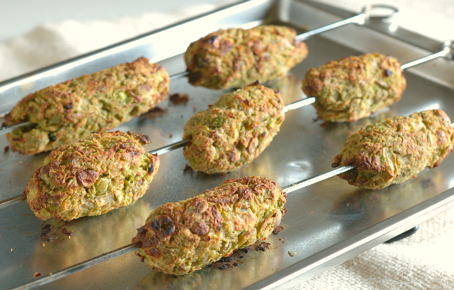
Serve hot with a cup of yogurt and some grilled pearl onions/small shallots.
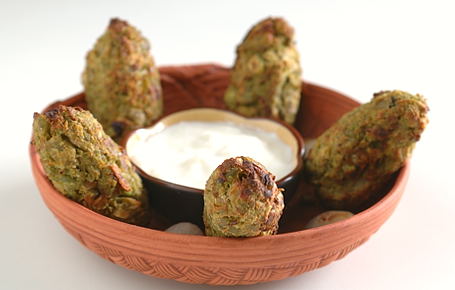
Notes:
Book Cover, Ranjit Rai photo and “Ode to the Tandoor” poem is taken from “Tandoor” cookbook (Copyright:Anuradha Ravindranath) for review purpose.
Thanks V!
Available at : Amazon, Powell’s.com, Indiaclub.com
Recommend this book to your local libraries.
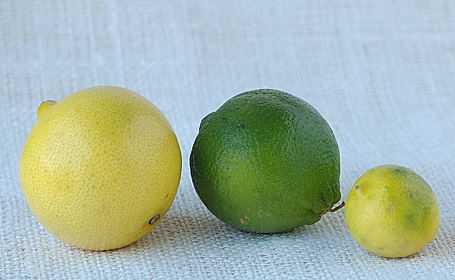
“Sweet lime (C. limetta) is a fruit that resembles lemons in every respect, except it does not have the mouth-puckering taste. Its mild, sweet juice tastes like home-made lemonade without the hard work or sugar. There are three varieties of limettas, all having the characteristic nipple on one end with a furrow round it. Grown mainly in Italy and California. It is also grown on a small scale in India and around the Mediterranean.”
– From Limes and Types.
– Photo of Sweet Lemons for Sale in Chennai, India.
Wonderful tribute to the Almighty Coconut – By Ahswini of Food for Thought.
Rosie from Scotland is hosting Febraury edition of Jihva.
She mentions that she is nervous.
Let’s gingerly overwhelm her with fabulous Ginger entries.
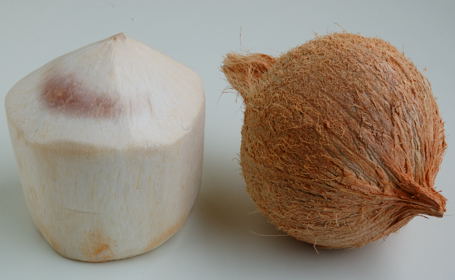
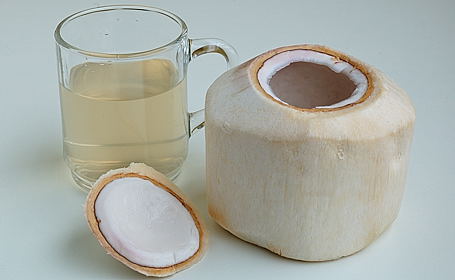
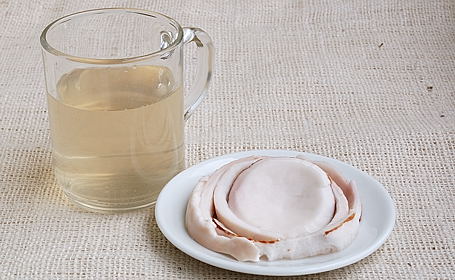
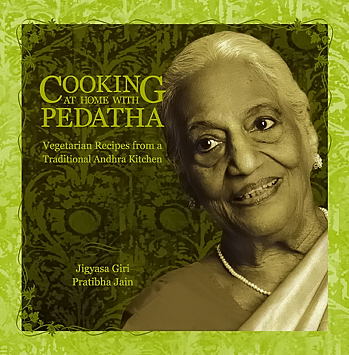
Recently I have received a cookbook to review. The title of the book is “Cooking at home with Pedatha”.
Atha (or attha) means father’s sister in Telugu. Pedatha means eldest Atha. After grandparents, Pedatha, an authority motherly figure is the most important person and pedatha’s advice and asheerwad (blessings), are always sought in our homes during difficult times and for celebrations. We respect pedatha. After reading and trying a couple of recipes from Pedatha’s cookbook, I felt like I’ve found an emerald gem that would bring good health and good luck to my cooking.
Here in this cookbook, the authors Jigyasa Giri and Pratibha Jain captured their Pedatha’s 85-years kitchen experience and wisdom. A blend of hot, sweet, sour and aromatic flavors, often all in one dish – the genius and simplicity of Andhra cooking, are laid out in endearing detail. Rice preparations, simple stir-fry curries, spicy powders, savory rasams and traditional sweets are all explained in Pedatha’s words. The result is like a marriage of perfect flavorings with natural goodness of fresh ingredients.
What I particularly liked about this cookbook is how it speaks to us, the Indians. It has an authentic voice which is compelling. I am from Nandyala, Andhra Pradesh and almost all of the recipes are just the way my mother would prepare. There are no shortcuts and there is no compromise in authenticity to please the western audience taste. Accompanied by breathtaking images, the recipes are easy to follow and most of them can be cooked in a short 30-minute time.
The only drawback I can think of is, when compared to ‘Hummer’ size cookbooks in vogue now, this book with 61 recipes in 87 pages may look like ‘Toyota Prius’. On the other hand, this may not be a drawback at all. I think even a newbie will easily get an idea and can cook a decent full fledged Andhra feast called “vindu bhojanam”, following the recipes, images and the menu ideas.
If you are like me, uninspired by cookbooks that devoid of originality and authenticity, often poor victims of meddling editing and mega publishers pressuring tactics, and hungry for a true Indian cookbook, then this book is for you. You may be a novice or an experienced cook, “Cooking at home with Pedatha” with its clutterfree instructions and clean, pleasant images will definitely assist and delight you just like Pedatha in our lives. Check it out!
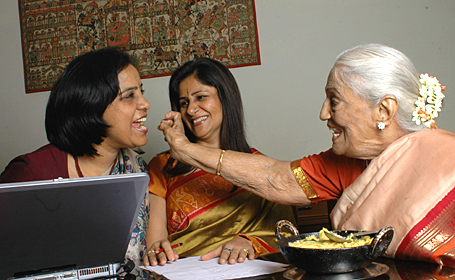
Cookbooks are dime a dozen here in USA, but they are rare in India. There is no cottage cookbook industry and publishing a cookbook particularly one that focuses on regional cooking is still a big deal. Most of the times it’s truly a labor of love.
I wanted to know who inspired and what motivated the authors, and how they survived the brutal publishing phase to bring the book into market. Pratibha and Jigyasa responded immediately to my questions and were kind to this newbie. Thanks Pratibha and Jigyasa!
Here is my interview with the authors.
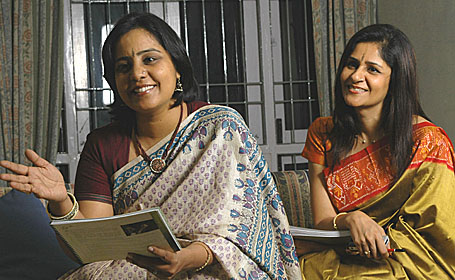
You have made an excellent book with uncompromising authentic recipes. What motivated you to write and publish this book? Who is your intended audience?
Thank you for the compliments. Frankly, the main motivating factor was pure love. When you meet Pedatha, you will realize how true this answer is. You know Indira, most of the things we have done in life have always been planned. Strangely, this book was never an agenda. Both of us like interacting with elders very much and we just used to visit Pedatha and chat – invariably about food, for such is her passion for cooking. When that personal collection became a book…. it was destiny’s hand and we just went along with the force of it.
Regarding the audience, we thought it was a niche product. Therefore, the only way to appeal to a wider audience was the idea of a coffee table book. Honestly, we never ever expected to go into second print, and so soon.
Our elders, who are greatly experienced in our cooking styles are exceptional assets for us. “Peddatha” is one such great asset. What did she think about publishing her recipes in the form of a book?
She would be very excited about teaching us whenever we visited her. But later, when the idea of a book emerged (initially from Jigyasa’s husband who said this is not a personal collection, this is a book in the making), she was very apologetic and shy. She kept saying it was home food and that there was nothing to it. In fact, she also once said that she feared people would say that she had misled us ‘little girls’ into thinking that her food was exceptional.
We remember one day when she said the same thing again. And we told her, “Pedatha, does a pearl know its worth? Only a jeweler knows that. So you Pedatha, are our precious pearl and we are your jewelers. Oh how she laughed and said – Now I understand. Ok ok.”
After all the fame and interviews, she is still as simple as always. We can’t stop marveling at that. But she thanks us a hundred times and laughs – “Without walking the ramp, you naughty girls have made me a model”. She calls us – The three Musketeers. She calls our laptop a lapdog because she says it has been so faithful to her. She thinks the recipes are just as she cooks them.
The beauty of the book you made truly portrays the essence of the recipes you put in the book. Cooking is intensively skilled process. Recording and reproducing these processes in the form of a book requires another level of skills too. What was your approach and method to create such wonderful design, photographs and narration? Who was your inspiration?
The first step of inspiration was Pedatha’s photographs – we were
stunned when we saw the results of the camera. I guess from there, we just had to make a book that blended with her pictures.
Regarding the layout and graphics, all credits to our team – Prabodh Jain (every adjective mentioned in the thanks note in the book is just apt – creativity and sustained vision) – he nudged us along every step of the way, challenging us not to compromise; Kavitha Shivan, our young layout designer, is a dream to work with (if u put aside her moods:) and spells of inactivity), guess that’s what creativity is about. In fact, Kavitha played a vital role in food presentation. Srivatsa, our photographer, simple, genuine and hard working – ever willing.
Pratibha’s mom once asked her brother Prabodh what made him so passionate about this project. He said, “Mom! These girls will kill themselves for that right word, the right phrase (he had seen our endless editing and the dozens of times we tried each recipe). How can any of us not respond likewise!” This was a compliment indeed.
I can understand that publishing a book is not as simple a process as preparing a dish. You might have gone through a great deal of work to get the book in to the market. How did you survive through tedious process?
Once the book was ready, quite a few friends and relatives came forward to launch the books. You can see that in the calendar page of our site. Pedatha’s son Mr. A.P.Parigi, an encouraging, positive, friendly person, came forward to launch the book in a big way in Mumbai. That evening was a phenomenal success.
Apart from that, Westland immediately agreed to distribute in India. We are still far behind in distribution though. As single book authors, it is not easy to get a shelf place in stores. However, since we are primarily ambitious as writers, it gives us that space within ourselves not to get obsessed with sales and marketing beyond a point.
What do you think about food blogs and would you like to share anything else with the readers of food blogs?
Food blogs are a reaching-out point for most net savvy cooks. It is almost like a huge wave out there. So easy to find recipes now, just a click away. And in blogs, the responses from other readers to the recipes make it interesting, as well as help decision-making. The best thing is the photographs on food blogs – they are honest, the food looks as it cooks. We wish every food blog would have a grandma’s corner – recipes, health tips, and anecdotes. Grandmas and granddads are such an awesome phenomenon.
What a wonderful thing that blogs are free! Anywhere, anyone who has something to say or share has a forum to do so. Thanks to food bloggers, our kitchens are constant discovery zones now.
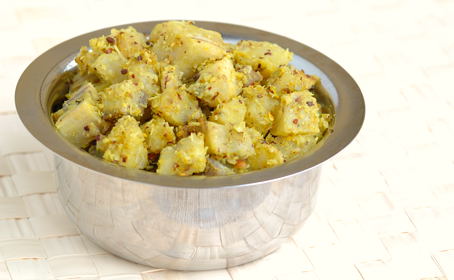
I have been cooking several recipes from the cookbook for the last few days. Traditional recipes that I totally forgot until now. One such recipe is plantain curry with mustard seeds paste. Known as arati ava pettina kura, this special, seasonal dish of Andhra is often prepared for festivals.
I’ve followed Pedatha’s words and instructions mostly, and added salt and chillies to suit my taste. The result was a spectacular, simple dish, which brought me incredible joy. The kind of joy and happiness one would feel when remembering a cherished memory or taste from the past. Thank you Pedatha!
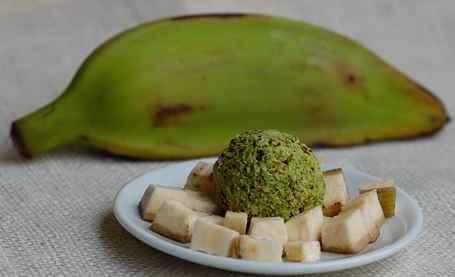
Recipe:
2 plantains
peeled & cut into cubes – boiled in water just until tender & drained.For Mustard Seed ~ Coconut Paste:
2 teaspoons mustard seeds and 1 tablespoon of raw rice
(soaked in warm water for 10 minutes – to soften, so that they can grind well)
¼ cup of fresh grated coconut
8 green chillies – small, Indian variety
1 inch piece of ginger – peeled and cut to tiny pieces
¼ cup of fresh cilantro leaves and pinch of salt
grind them to smooth paste without adding any water – in a mortar or in a blenderFor popu or tadka:
1 tsp each – urad dal, cumin, mustard seeds
6 each- curry leaves and red chilli pieces
A pinch of asafetida powderSalt and turmeric to taste
In a wide skillet, heat a tablespoon of oil. Add and toast popu or tadka ingredients listed to gold color. Add the grinded paste. Saute until it leaves the raw smell for few minutes on medium heat. Add in boiled plantain cubes, turmeric and salt. Mix thoroughly. Sprinkle two tablespoons of water and cook covered for about 10 minutes stirring in-between.
Serve warm with chapati or rice.
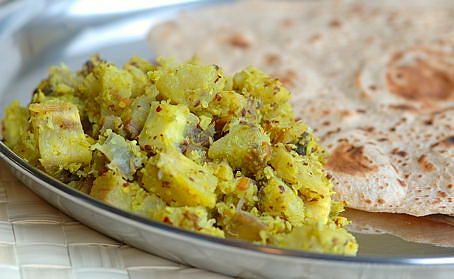
Cooking at home with Pedatha:
Recommend this cookbook to your local libraries
Jigyasa and Pratibha’s Website: www.pritya.com
Cookbook cover and authors photo credit : Jigyasa and Pratibha
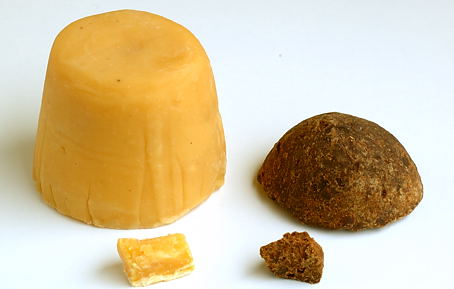
Jaggery and sugar are India’s gifts to the world!
I do not know how many of you know this but ancient Bharath (India) pioneered the sugar making technique. Harold McGee, the author of entertaining and educational cookbook “The Science and Lore of the Kitchen” describes in detail how thousands of years ago, India enamored the world with the taste and technique of sugar making. This is the first ‘spice’ that was exported from India. These ancient traditions still continue and along with sugar, jaggery is also prominently used in Indian cooking.
There are two types of jaggery available in India as far as I know. One is from sugarcane and the second type is from Palmyra palm tree (toddy palm or taadi chettu) . Sugarcane juice (for cane jaggery) sap (for palm jaggery) from trees is boiled down hours and hours. And the concentrated liquid is poured into molds to dry. Depending on the mold used, you would see jaggery in different shapes- cylindrical blocks, smooth round balls and half spheres etc. Depending on the sweetness level and color, the jaggery is two types. Pale gold colored one – this is what’s available in most of the Indian grocery shops here in US. This is popular mainly because of my generation’s penchant for all things pale colored. Good, decent taste, I use it regularly in my cooking. But my parents and grand parents back in India prefer the dark colored jaggery. Aging or curing the freshly prepared jaggery for sometime will result in potently sweet, distinct flavored dark colored jaggery. For them, pale colored ones are inferior in taste. I agree that there is a significant difference between those two types. Because of this fact, often in our homes for marriages and special occasions, the dark colored jaggery is preferred to prepare sweetmeats.
When it comes to taste – jaggery has a distinct taste. English language, perhaps the most powerful tool and expression of current day culture, has millions of words but none of which are really good enough I think and there is no word in English that completely serves to describe the taste of Jaggery. If you have tasted one, cooked with one, smelled one, then you know the subtle sublime scrumptiousness Jaggery brings to a recipe. Otherwise, a translation attempt ‘tastes like molasses, brown sugar or maple syrup‘ is either an incomplete and false hint, for anyone who doesn’t know the taste of jaggery, or is simply annoyingly weak and unevocative.
Jaggery stores well. Once in 3 or 4 months, I buy a big block of jaggery from Indian stores. I break it using a knife and hammer. Place the knife in the middle of the block and lightly hit it with hammer. Jaggery breaks into pieces. Further gentle tapping with hammer results in small pieces and powdered jaggery. I keep what I need in a small container in kitchen cabinet and store the remaining pieces for later use in a Ziploc bag in the refrigerator. Just with 15 minutes work, I would be set for at least 3 months. I use jaggery in different traditional Indian preparations – to sweeten the curry sauces, for pappu chaaru and also to prepare sweets like payasam, kheer and cashew sweets etc. Back in home, in India, people often prepare sweets with jaggery. Particularly for naivedyam, jaggery sweets are preferred to sugar sweets. Our elders, they may not have degrees, but they do know where the ingredients come from and how they are made. They avoid sugar in naivedyam because after all sugar is processed by using dead animals bone meal.
One complaint I often hear about jaggery is presense of sand or dust particles in it. The reason for it is jaggery is still prepared in ancient way, in the fields. There will be harvesting of sugar cane going on one side and on the other end concentrating the sugar cane juice will be going on. Air carries some particles into this liquid. The farmers do filter the liquid before pouring into molds but one or two particles always find a way to join in. For some, these particles are reason why they avoid jaggery and prefer sugar. For me, I prefer sand particles to bonechar contamination anytime of the day. Atleast I know how to deal with jaggery impurities – melt and strain.
For the month of December, for Jihva – the online food blogging event, we the food bloggers are going to celebrate the goodness of Jaggery. All thanks to the new mom and the host of JFI, Kay, for her wonderful selection. Whether you are an already ordained admirer of jaggery by birth or it is your first time, join and (re)discover the subtle, sublime scrumptiousness of jaggery cooking, both in sweet and savory recipes.
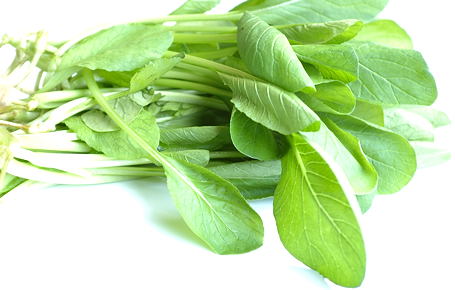
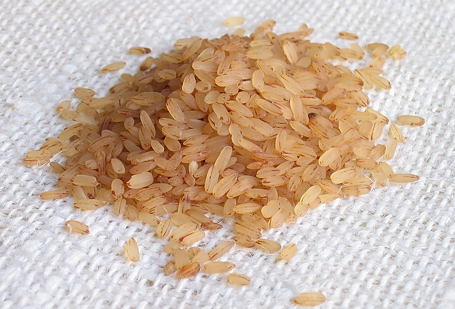
Purchased from Seattle Indian grocery shops
How to cook rose matta rice – recipe
